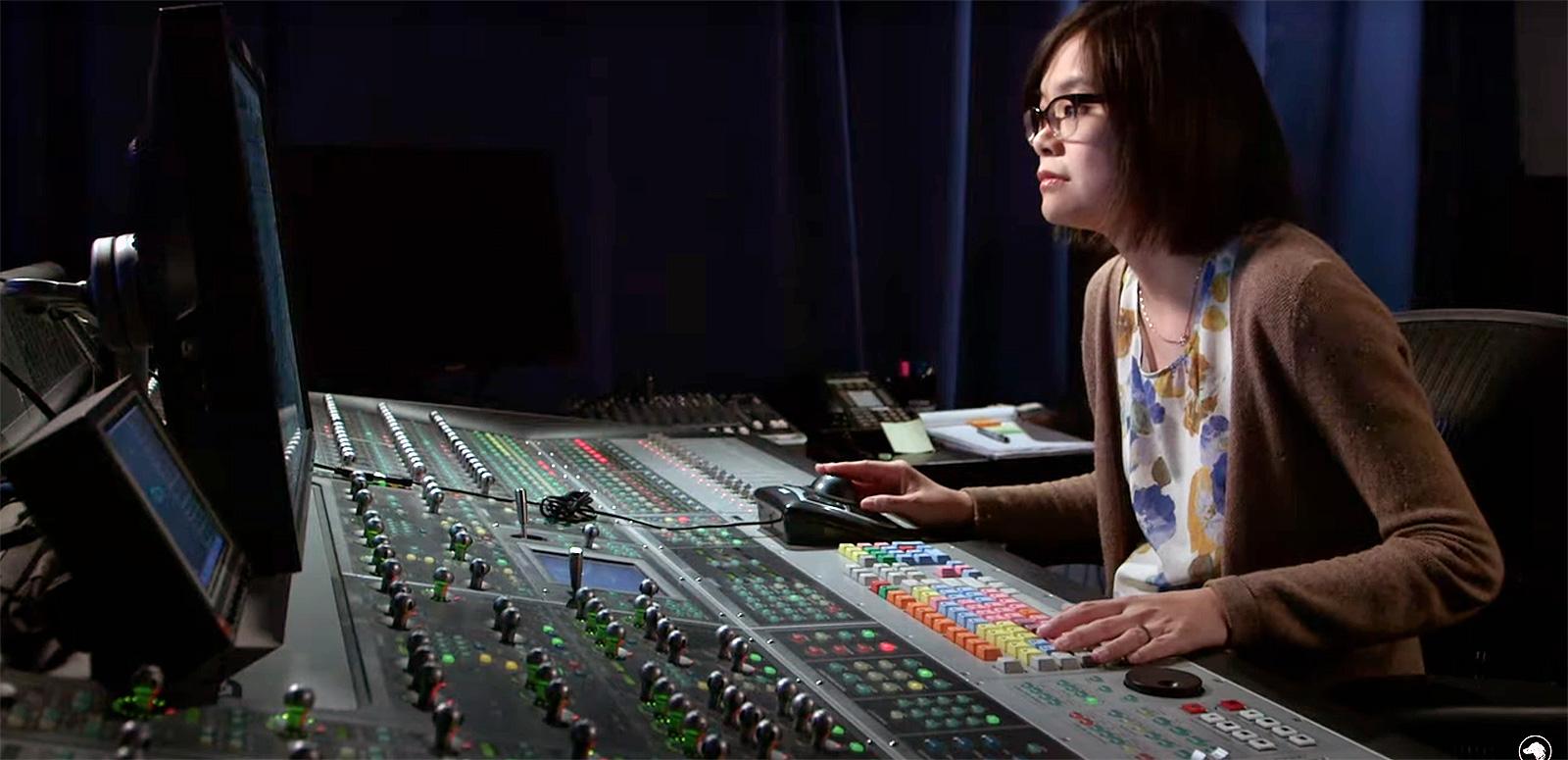In September 2020 the NFSA screened the documentary Making Waves: The Art of Cinematic Sound, followed by a Q&A with award-winning Australian sound designer Emma Bortignon.


In September 2020 the NFSA screened the documentary Making Waves: The Art of Cinematic Sound, followed by a Q&A with award-winning Australian sound designer Emma Bortignon.
Making Waves: The Art of Cinematic Sound trailer, 2019.
Making Waves (Midge Costin, 2019) presents an intriguing argument that silent cinema was a side product of film technology's inability to sync sound and picture. Moreover, this early technical dilemma – which lasted 35 years until the late 1920s – contributed to a general lack of understanding and appreciation of the role of sound.
The assumption is that we see a film, we don't hear a film. Making Waves challenges this belief and encourages us to listen and to think with our ears.
The screening was followed by a lively Q&A with Australian sound designer Emma Bortignon:
Q&A with Australian sound designer Emma Bortignon, 2020.
Emma is known for her work on films such as Noise (2007), Murundak: Songs of Freedom (2011) and Tanna (2015), the first film to be shot entirely on location in Vanuatu (which screened at the NFSA on 12 September).
Emma speaks about Making Waves, expanding on her creative process of sound design – what makes it such a unique art form and how it shapes storytelling in film. She recounts stories about dealing with directors and working as a woman in the Australian film industry. Like Hollywood sound legend Walter Murch – featured in the Making Waves trailer above – Emma was also influenced by the composer John Cage and musique concrète (an experimental technique of musical composition using recorded sounds as raw material).
Emma received an AACTA/AFI Award for her work on Noise (Matthew Saville, 2007), a film that centres on a suburban tragedy and whose main character Graham McGahan (Brendan Cowell) suffers from the hearing condition of tinnitus. As you can see in this clip from Noise on australianscreen, the film places sound at the forefront of the film and, in conjunction with the score, magnifies the horror of chronic tinnitus. Much of the high-frequency sound provides a subjective impression of Graham's world – it drives his character and lends itself spatially to the claustrophobic world of Melbourne suburbia.
View more clips from Noise and read Paul Byrnes' curator's notes on australianscreen.
The sound design for Noise recalls earlier Australian films. Rolf de Heer's Bad Boy Bubby (1993), for instance, utilises 'binaural sound' technologies as an attempt to create a more authentic stereo effect:
Bad Boy Bubby (excerpt), 1993. NFSA: 255585
The effect is achieved by placing two radio microphones just above the ears of the actor. These microphones give a much more subjective feel to the sound so that we hear the world as Bubby hears it.
View more clips from Bad Boy Bubby and read Paul Byrnes' curator's notes on australianscreen.
In addition to Walter Murch, Making Waves introduces us to other unsung heroes of Hollywood sound creation such as Ben Burtt (Raiders of the Lost Ark, WALL-E), Kysten Mate (The Avengers, Ready Player One) and Victoria Rose Sampson (Ordinary People, Pirates of the Caribbean). It also provides fascinating insights into the use of sound by legendary directors.
As with art direction or cinematography, sound plays a decisive role in the dramatic impact of a film. When done well, it can exploit our (the audience's) most innate responses – such as alarm and distress, or joy and desire.
The documentary also tells the stories behind some of most memorable sonic moments in cinema history. Murch, for instance, talks about his work on The Godfather (1972), including the famous close-up of Michael Corleone's (Al Pacino) face after he shoots Sollozzo (Al Lettieri) in the Italian restaurant. Accompanying this image is the sound of a slow-building electronic subway train. 'What you're listening to', says Murch, 'are Michael's neurons clashing against each other'.
And who would have thought Cece Hall’s blasting engine noises in her sound design for Top Gun (1986) were created by slowed-down and pitch-shifted tiger and lion roars?
In addition to interviews with sound creators, we also gain insight from influential directors such as David Lynch, Robert Altman, Francis Ford Coppola, Steven Spielberg, George Lucas and our own Peter Weir. What becomes clear is the extent to which these directors think sonically, not just visually. Films like Apocalypse Now (Francis Ford Coppola, 1979) and Nashville (Robert Altman, 1975) particularly stand out for their experimentation with sound techniques such as synchronicity, layering, placement, shaping and movement.
There are many more fascinating examples of Australian film sound in our collection. See curator's notes and watch clips from Peter Weir films on australianscreen.
Explore how the Mad Max films’ sound and music not only provide emotional resonances to specific scenes and help clarify filmic meaning, but also function on spatial, temporal and psychological levels.
Watch a discussion of Making Waves on YouTube featuring director Midge Costin, film subject Walter Murch, producers Bobette Buster and Karen Johnson, and editor David J Turner on 27 October 2019 at the Samuel Goldwyn Theater in LA.
The National Film and Sound Archive of Australia acknowledges Australia’s Aboriginal and Torres Strait Islander peoples as the Traditional Custodians of the land on which we work and live and gives respect to their Elders both past and present.